The Cost of Victory Read online
Page 29
Europa has a relatively small collection of colonies. All colonization is done under strict government oversight, and existing colonies are subject to the heaviest bureaucratic burden of any of the powers. Inspectors, regulators, and political officers swarm over every colony world, suppressing economic activity and making Europa's settled worlds the least productive in human-occupied space.
Colonies are garrisoned by the Compagnies d’Etoile, well organized and equipped units of colonial regulars. The Compagnies are recruited on Earth, and volunteers receive grants of land or mining rights in exchange for a commitment to settle on the frontier after their ten year term of service.
The Compagnies are supported by Consular Guard units of powered infantry. Europa has also maintained the ancient French Foreign Legion, a small but highly effective frontier fighting force manned entirely by outcasts of other nations.
Central European League
Capital: Neu-Brandenburg
The intensity of the Caliphate's attack in the early years of the Unification Wars was such that virtually all the nations of Europe were forced to join forces to hold back the onslaught. Once this southern front was stabilized, Europe was thrown into confusion as many of the old governments collapsed, their bloated and bankrupt bureaucracies no longer able to sustain themselves or deliver even basic civil services.
The coalescence of Europa Federalis from the Latin nations of Europe caused the Germanic and Slavic peoples to fear Gallic domination, and they looked to the shattered remnants of Federal Republic of Germany for leadership. The senior generals of the Heer, now fully in control of the German government, drafted a new constitution offering associate status to neighboring nations. The resulting Central European League ultimately came to encompass all of greater Germany, Poland, the Balkans, and parts of Belarus, the Ukraine, and Scandinavia.
The CEL is essentially a military dictatorship. The new Reichstag was comprised of 333 members, 200 nominated by the military and the rest elected by the component states. The Chancellor is chosen by the Reichstag, but the commander of the Heer has veto power over any Chancellor-elect, and to date none but senior generals have served.
The CEL is the only superpower to have a completely new, purpose-built capital city. With Berlin virtually destroyed by revolution and riots and occupied by millions of squatters and refugees, the CEL government commissioned the construction of a new city to be called Neu-Brandenburg. Though small by the standards of other capitals, it is the newest and most modern city in the world.
The CEL has a moderate, but very consolidated and organized interstellar empire. The frontier military forces of the CEL are spearheaded by elite panzergrenadier units of powered infantry.
The CEL remains a bitter enemy of Europa Federalis.
Russian-Indian Confederacy
Capital: St. Petersburg
In the early stages of the Unification Wars it seemed as though the tattered remnants of the old Soviet Union would fall to the forces of the Caliphate. The invader was eventually defeated, as had happened so many times in the past, by the Russian winter combined with a desperate counteroffensive. The previously scattered remnants of the Russian, Georgian, and Ukranian armies, reinforced by a small but capable contingent of allied US forces struck back, and in a massive two-month battle they defeated the forces of the Caliph and turned them back.
The Russians and their allies never regained all of the territory lost to the Caliphate and were subsequently deprived of several Asian provinces by the CAC and the PRC. Nevertheless, with continued U.S. assistance and a humiliating but necessary treaty with the PRC, the situation was stabilized, and the newly formed Confederacy survived to emerge, however marginally, as one of the superpowers.
The CAC and the Caliphate had destroyed the emerging Indian superpower, but they fought each other to exhaustion over the spoils. The Russians, regrouped and reorganized, attacked south and reclaimed the former Soviet states in the area, then invaded Afghanistan and seized part of Pakistan. Establishing contact with the scattered and disorganized remnants of the Indian military, the revived Russian army drove south. Taking advantage of an opportunity, they offered the Indians a co-equal partnership and extended the Confederacy to include the re-claimed northern areas of India.
The Confederacy is ruled by three triumvirs, elected to staggered ten-year terms of office by the Oligarchs, the leaders of the large business combines that control the economy. The RIC is a relatively poor and technologically backward superpower, and the Russo-Indian military, other than a few elite strike units, is poorly equipped.
The Confederacy was struggling for its very survival when the other superpowers began sending expeditions through the newly discovered warp gates. By the time the RIC made it into space in significant force, many of the choke point systems were occupied, and the Russians were compelled to fight hard to assemble a small collection of colonies.
South American Empire
Capital: Caracas
When the world economy began to collapse, the nations of South America suffered catastrophic depressions followed by mass starvation and revolution. Warfare erupted throughout the continent, as nations and shattered remnants of nations fought each other savagely for a dwindling pool of resources.
Eventually, a brilliant Venezuelan warlord named Gabriel de Santos conquered most of the northeastern portion of the continent. The formation of the Western Alliance, and the resulting increase in U.S. military power created a fear that South America would fall under Alliance domination. Fanning these fears, de Santos was able to unite about half of the continent under his rule, and he declared himself emperor. Several decades of war were required to subdue the rest of the South America.
The newly formed empire was in ruins and economically prostrate, and it was left to the conqueror's son, Gabriel II, to rebuild the shattered realm and attain true superpower status. By the time this reconstruction was sufficiently complete to support a program of space exploration, the other powers had sewn up all the lucrative systems. The SAE has the smallest collection of colonies, and this cluster has no known warp gates leading to unclaimed space. The empire cannot expand in space without taking someone else's real estate, and they lack sufficient force to do so alone. As a result, the SAE strategy has been to seek opportunities to align with stronger powers to attain its goals.
SAE space forces consist of quasi-irregulars supplemented by a very few elite Imperial Guard units. SAE worlds are owned and operated by major corporations, which field their own private armies. It is common for these forces to be hired out as mercenaries to any power that can pay and not unheard of for SAE troops to be fighting on both sides of a war.
Free Martian Confederation
Capital: Ares Metroplex
In the years just before the start of the Unification Wars, several small U.S. colonies were established on the surface of Mars, followed by similar settlements from China, Russia, Japan, and the U.K. While the nations of Earth fought decade after decade of increasingly savage and destructive war, these colonies survived, prospered, and grew.
Millions wished to escape from the cataclysm occurring on Earth, and the Martian colonies had their pick of immigrants. Consisting almost entirely of the highly skilled and educated, the Martian Exodus, as it was called, created somewhat of a "brain-drain" on Earth, but fueled the expansion and prosperity of the Mars colonies.
When the Treaty of Paris was signed and the nations of Earth again focused on space exploration, they found that the Martians, as they called themselves, felt they were independent of any Earth authority. They banded together into a loose confederation and demonstrated that Mars was quite capable of defending itself, possessing what was at the time the largest fleet of spacecraft of any nation.
While the population of Mars was tiny compared to that of the superpowers, it was almost entirely comprised of productive elements. Where the superpowers had crime ridden, poverty stricken, and useless cities, the Martians had a well ordered and highly e
ducated society. Where the powers of Earth were devastated, exhausted by war, and plagued by crumbling infrastructure, Mars was a high-tech and productive society. The superpowers had no viable choice but to accept the Confederation as an independent power.
By far the smallest of the powers, the Confederation relies upon small, well-trained, and superbly equipped ground units to maintain its position in the interstellar race. The Confederation is the least expansionist of the powers, and while it dominates the moons and asteroids of the Sol system, it has a very small group of interstellar colonies. Mars rarely intervenes in the wars between the other powers, preferring to maintain a policy of armed neutrality.
By Jay Allan
Tombstone (A Crimson Worlds Prequel)
Marines (Crimson Worlds I)
The Cost of Victory (Crimson Worlds II)
A Little Rebellion (Crimson Worlds III)
(December 2012)
The First Imperium (Crimson Worlds IV)
(March 2012)
The Last Veteran (Shattered States I)
The Dragon's Banner
Join my email list at
www.crimsonworlds.com
for publication announcements
Email list members will receive
free copies of select stories
throughout the year
Please feel free to email me with any
questions at [email protected]
I answer all reader emails
Table of Contents
By Jay Allan
Chapter 1
AS Cromwell
Flagship, Alliance Grand Fleet
Gliese 250 System
Chapter 2
I Corps Assembly Area
Columbia - Eta Cassiopeiae II
Chapter 3
Western Alliance Intelligence Directorate HQ
Wash-Balt Metroplex, Earth
Chapter 4
Control Center
AS Pendragon
In orbit around Columbia - Eta Cassiopeiae II
Chapter 5
CAC Central Committee HQ
Hong Kong, Earth
Chapter 6
Classified Excavation Site Z
Epsilon Eridani IV
Chapter 7
Space Station Tarawa
Gliese 250 System
Chapter 8
Western Alliance Intelligence Directorate HQ
Wash-Balt Metroplex, Earth
Chapter 9
AS Cromwell
Flagship, Task Force Tecumseh
AD Leonis System, en Route to TZ Arietis Warp Gate
Chapter 10
I Corps HQ
Columbia - Eta Cassiopeiae II
Chapter 11
Marine Earthside HQ
Camp Puller
Near New Houston, Texas
Chapter 12
I Corps HQ
Columbia - Eta Cassiopeiae II
Chapter 13
Alliance-PRC Combined Fleet
Epsilon Eridani System
Inbound from the YZ Ceti warp gate
Chapter 14
Launch Bay Alpha
AS Pendragon
In orbit around Epsilon Eridani IV
Chapter 15
1st Brigade HQ
Base of the Lysandra Plateau
Epsilon Eridani IV
Chapter 16
Northern Face of the Lysandra Plateau
Epsilon Eridani IV
Chapter 17
Alliance-PRC Combined Fleet
Epsilon Eridani System
Deployed around Epsilon Eridani IV
Chapter 18
Foothills of the Tarsus Mountains
North of the Lysandra Plateau
Epsilon Eridani IV
Chapter 19
Field Hospital One
Epsilon Eridani IV
Chapter 20
Alliance-PRC Combined Fleet
Epsilon Eridani System
Approaching the orbit of Epsilon Eridani V
Chapter 21
Near 1st Brigade HQ
Northern Spur of the Lysandra Plateau
Epsilon Eridani IV
Chapter 22
WAS Saratoga.
Epsilon Eridani System
In the asteroid belt past the orbit of Epsilon Eridani V
Chapter 23
East of the Lysandra Plateau
Epsilon Eridani IV
Chapter 24
Task Force Omaha
YZ Ceti System
En route to the Epsilon Eridani warp gate
Chapter 25
Field Hospital One
Epsilon Eridani IV
Chapter 26
East of the Lysandra Plateau
Epsilon Eridani IV
Chapter 27
WAS Midway
Alliance Combined Fleet
In orbit around Epsilon Eridani IV
Chapter 28
I Corps HQ
Durang Valley
Epsilon Eridani IV
Chapter 29
C1 Headquarters Building
Wan Chai, Hong Kong
Central Asian Combine, Earth
Chapter 30
Shuttle Beta-3
Henderson Landing Field
Epsilon Eridani IV
By Jay Allan
Appendices
Naval Combat Tactics
Weaponry
Defensive Systems
Nationalism and Cultural Makeup of the Superpowers
Class Structure in the Western Alliance
The Cogs
The Middle Class
About the Superpowers
The Western Alliance
Capital: Washbalt Metroplex
The Mohammedan Caliphate
Capital: New-Media
Central Asian Combine
Capital: Hong Kong
Pacific Rim Coalition
Capital: Tokyo
Europa Federalis
Capital: Paris
Central European League
Capital: Neu-Brandenburg
Russian-Indian Confederacy
Capital: St. Petersburg
South American Empire
Capital: Caracas
Free Martian Confederation
Capital: Ares Metroplex
By Jay Allan

 The Emperor's Fist
The Emperor's Fist Blood on the Stars Collection 1
Blood on the Stars Collection 1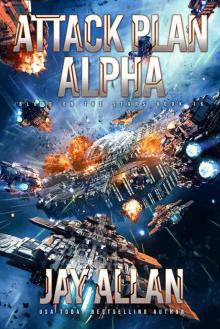 Attack Plan Alpha (Blood on the Stars Book 16)
Attack Plan Alpha (Blood on the Stars Book 16) BOB's Bar (Tales From The Multiverse Book 2)
BOB's Bar (Tales From The Multiverse Book 2) The Others
The Others Nightfall
Nightfall Empire's Ashes (Blood on the Stars Book 15)
Empire's Ashes (Blood on the Stars Book 15) Wings of Pegasus
Wings of Pegasus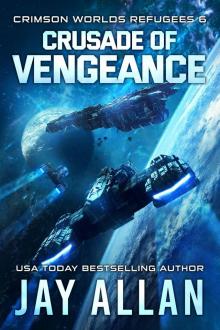 Crusade of Vengeance
Crusade of Vengeance The Last Stand
The Last Stand Blackhawk: Far Stars Legends I
Blackhawk: Far Stars Legends I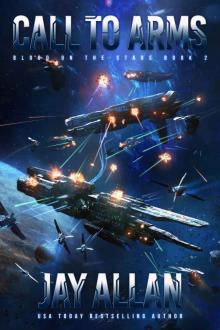 Call to Arms: Blood on the Stars II
Call to Arms: Blood on the Stars II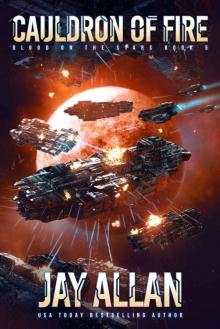 Cauldron of Fire (Blood on the Stars Book 5)
Cauldron of Fire (Blood on the Stars Book 5) Revenge of the Ancients: Crimson Worlds Refugees III
Revenge of the Ancients: Crimson Worlds Refugees III Crimson Worlds Successors: The Complete Trilogy
Crimson Worlds Successors: The Complete Trilogy The Grand Alliance
The Grand Alliance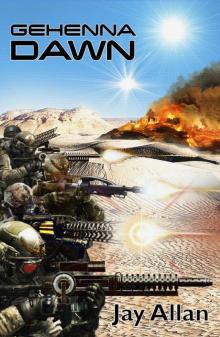 Portal Wars 1: Gehenna Dawn
Portal Wars 1: Gehenna Dawn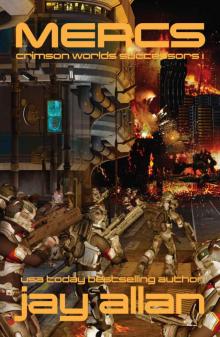 MERCS: Crimson Worlds Successors
MERCS: Crimson Worlds Successors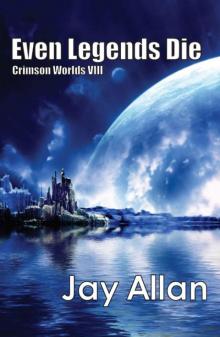 Crimson Worlds: 08 - Even Legends Die
Crimson Worlds: 08 - Even Legends Die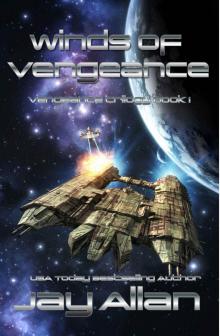 Winds of Vengeance
Winds of Vengeance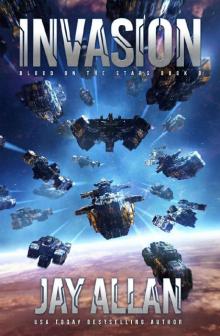 Invasion (Blood on the Stars Book 9)
Invasion (Blood on the Stars Book 9) A Little Rebellion (Crimson Worlds III)
A Little Rebellion (Crimson Worlds III)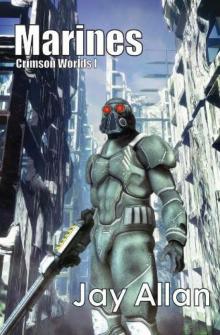 Marines
Marines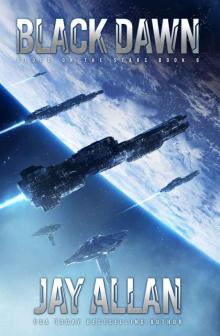 Black Dawn (Blood on the Stars Book 8)
Black Dawn (Blood on the Stars Book 8)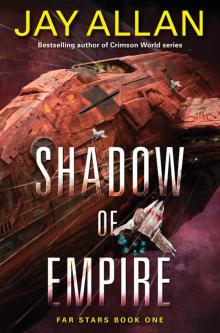 Shadow of Empire
Shadow of Empire Galactic Frontiers: A Collection of Space Opera and Military Science Fiction Stories
Galactic Frontiers: A Collection of Space Opera and Military Science Fiction Stories Winds of Vengeance (Crimson Worlds Refugees Book 4)
Winds of Vengeance (Crimson Worlds Refugees Book 4) Dauntless (Blood on the Stars Book 6)
Dauntless (Blood on the Stars Book 6) Portal Wars: The Trilogy
Portal Wars: The Trilogy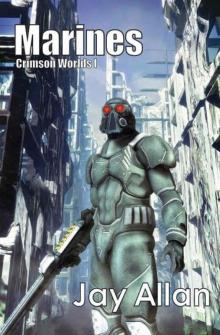 Marines cw-1
Marines cw-1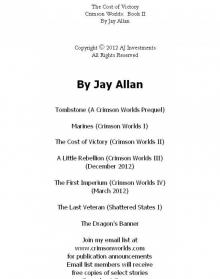 The Cost of Victory
The Cost of Victory Marines (Crimson Worlds)
Marines (Crimson Worlds) The Ten Thousand: Portal Wars II
The Ten Thousand: Portal Wars II The White Fleet (Blood on the Stars Book 7)
The White Fleet (Blood on the Stars Book 7)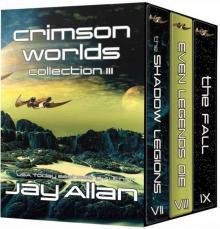 Crimson Worlds Collection III
Crimson Worlds Collection III The Black Flag (Crimson Worlds Successors Book 3)
The Black Flag (Crimson Worlds Successors Book 3) Tombstone
Tombstone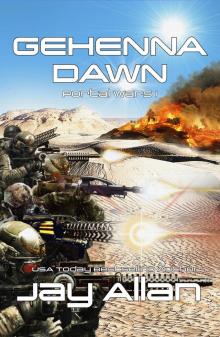 Gehenna Dawn
Gehenna Dawn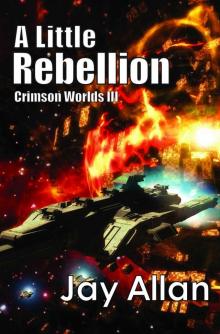 A Little Rebellion (Crimson Worlds)
A Little Rebellion (Crimson Worlds)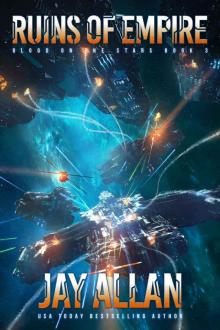 Ruins of Empire: Blood on the Stars III
Ruins of Empire: Blood on the Stars III Dauntless
Dauntless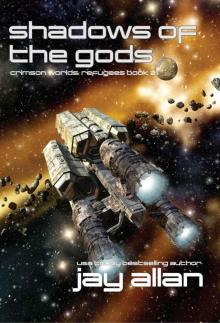 Shadows of the Gods: Crimson Worlds Refugees II
Shadows of the Gods: Crimson Worlds Refugees II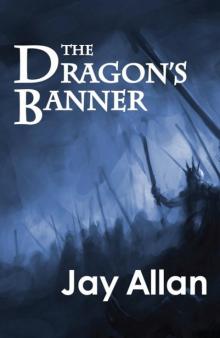 The Dragon's Banner
The Dragon's Banner Echoes of Glory (Blood on the Stars Book 4)
Echoes of Glory (Blood on the Stars Book 4)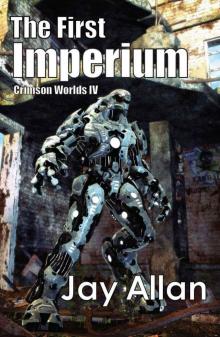 Crimson Worlds: 04 - The First Imperium
Crimson Worlds: 04 - The First Imperium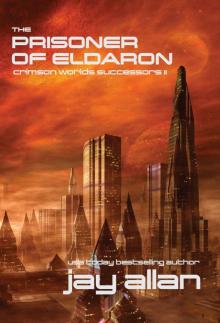 The Prisoner of Eldaron: Crimson Worlds Successors II
The Prisoner of Eldaron: Crimson Worlds Successors II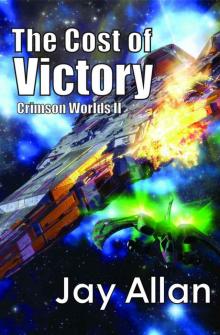 The Cost of Victory (Crimson Worlds)
The Cost of Victory (Crimson Worlds) Duel in the Dark: Blood on the Stars I
Duel in the Dark: Blood on the Stars I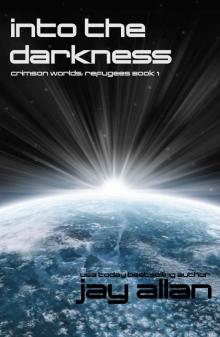 Into the Darkness: Crimson Worlds Refugees I
Into the Darkness: Crimson Worlds Refugees I Crimson Worlds Refugees: The First Trilogy
Crimson Worlds Refugees: The First Trilogy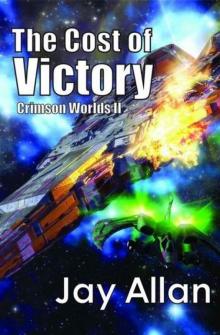 The Cost of Victory cw-2
The Cost of Victory cw-2 Stars & Empire 2: 10 More Galactic Tales (Stars & Empire Box Set Collection)
Stars & Empire 2: 10 More Galactic Tales (Stars & Empire Box Set Collection) Flames of Rebellion
Flames of Rebellion Stars & Empire: 10 Galactic Tales
Stars & Empire: 10 Galactic Tales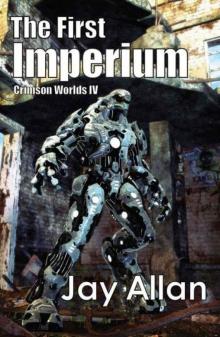 The First Imperium cw-4
The First Imperium cw-4 Crimson Worlds: 07 - The Shadow Legions
Crimson Worlds: 07 - The Shadow Legions Storm of Vengeance
Storm of Vengeance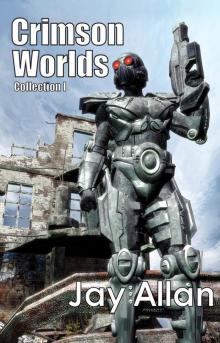 Crimson Worlds Collection I
Crimson Worlds Collection I Rebellion's Fury
Rebellion's Fury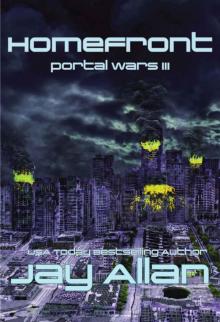 Homefront: Portal Wars III
Homefront: Portal Wars III Tombstone (crimson worlds)
Tombstone (crimson worlds) Crimson Worlds: Prequel - Bitter Glory
Crimson Worlds: Prequel - Bitter Glory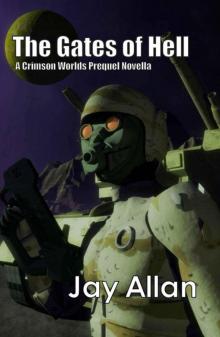 Crimson Worlds: Prequel - The Gates of Hell
Crimson Worlds: Prequel - The Gates of Hell The Fall: Crimson Worlds IX
The Fall: Crimson Worlds IX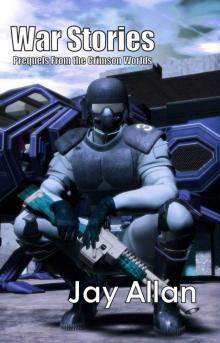 Crimson Worlds: War Stories: 3 Crimson Worlds Prequel Novellas
Crimson Worlds: War Stories: 3 Crimson Worlds Prequel Novellas Enemy in the Dark
Enemy in the Dark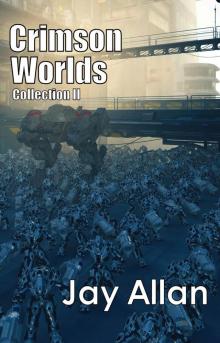 Crimson Worlds Collection II
Crimson Worlds Collection II